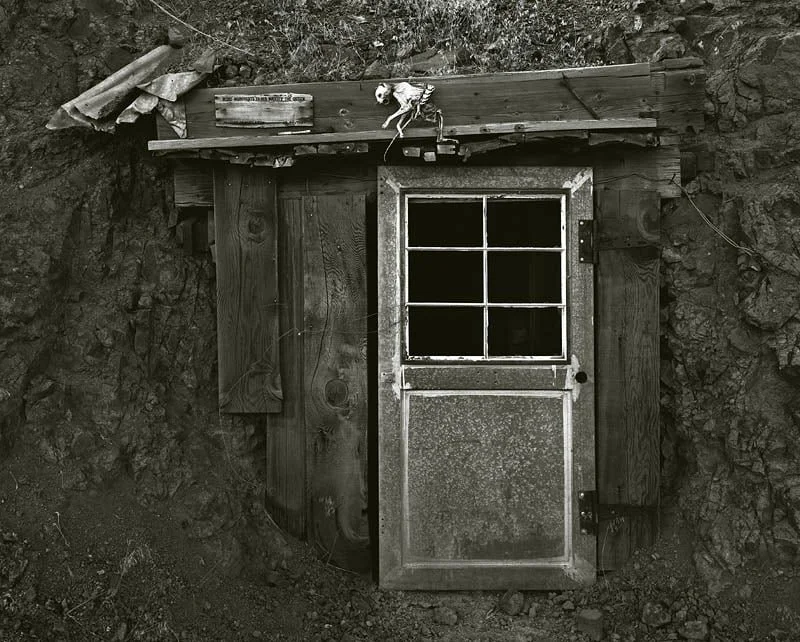
FRANK ARMSTRONG | WEST BOYLSTON, MASSACHUSETTS
*VIEWERS” CHOICE TOP 5
Photographer | Documentarian | Visionary of the American Landscape
Frank Armstrong is a master of the American photographic tradition, known for his lucid yet haunting images that distill the raw poetry and sometimes the uncanny absurdity of the land and its people. Working for decades with a large-format camera, Armstrong now photographs with digital and has spent decades translating the quiet resilience and eerie desolation of back roads, often forgotten places into enduring visual depictions of life in rural America. His work exists at the intersection of documentation and carnival—a study of human choices and often places that are neglected. Humor is a big part of the pictures Frank sees with his trained eye. Frank Armstrong is a contemporary of the great American photographers who shaped the post-war narrative of the landscape and life. At 90 years old, Armstrong strongly continues to reveal what lies on the back roads in forgotten fields and perfectly lit mountainsides, with the often included mannequin leg or torso complemented by a pink flamingo nearby. Frank gives us an eye into an ongoing conversation between ruin and reverence.
In Dead Cat Mine, Armstrong turns his lens toward a place where the earth itself seems to exhale memory. What was once a working mine, giving meager wages to America’s men and children now reads as a haunted place—an image suspended between visual decay and transcendence of memory of life in rural America. The skeletal structure of the cat and contrast in this image evoke the reality of industry and abandonment, a psychological terrain where silence feels inhabited, especially if you have mining in generations past. To think of people finding a dead cat and hanging it above the door of the dangerous shaft, just deepens the complexity of the image. There is so much there.
This photograph, like much of Armstrong’s oeuvre, refuses any sentimentality. Instead, it invites the viewer into an unflinching confrontation with life as it unravels. Dead Cat Mine echos a confrontation of delirium—a photograph that depicts the reality of American life. The boundaries between history and hallucination blur because this image is of a real place, a workplace and an image of how some of our countrymen lived. Within this stillness, Armstrong finds pulse; within desolation, he locates the sublime.
Frank Armstrong’s work has been exhibited widely in museums and galleries across the United States, including the Museum of Fine Arts, Boston; the Smithsonian Institution; the Addison Gallery of American Art; and the Worcester Art Museum. His photographs are held in numerous permanent collections and have been featured in landmark exhibitions exploring the American landscape and the evolving dialogue between place, memory, and perception, like his recent retrospective, American Roadsides at Fitchburg Art Museum in Massachusetts. Armstrong is currently preparing his entire catalog of images for historical preservation by The University of Texas, where he began his career. Frank taught photography for 21 years at Clark University alongside Stephen DiRado in Worcester, Massachusetts.
The Force of Photographic Vision at Clark University
Clark University has long been a quiet epicenter for photographic excellence—a crucible where vision, discipline, and experimentation converge. Under the profound influence of Frank Armstrong and Stephen DiRado, generations of noteworthy photographers have emerged attuned to the emotional and ethical weight of image-making. Their mentorship shaped a lineage that views the photograph not merely as documentation, but as witness and reckoning. With weekly meetups, many of these students still connect and visit, sharing their work with this tight community of creatives.
From Armstrong’s stark meditations on the American landscape to DiRado’s deeply human chronicles of family, time, and community, Clark has became a living laboratory of truth-telling through light because of these two hard working photographers and educators. That same current continues to ripple through Worcester—where artists who were once their students now carry the torch, advancing the reputation as a center of photographic depth and integrity.
Worcester’s photographic community, forged in that shared pursuit of authenticity, stands as a testament to the enduring power of mentorship, place, and the camera’s powerful force to preserve and teach. From a strategic perspective, the presence of both Frank Armstrong and Stephen DiRado at Clark University underscores the institution’s formidable capacity to cultivate serious photographic practice. Their experience and influence extends far beyond academia, seeding a generation of artists whose work resonates with truth-telling, authenticity, professional rigor, and emotional depth. Together, Armstrong and DiRado anchor an academic legacy that connects Clark to the broader arts infrastructure of Worcester—a city whose dynamic creative ecosystem continues to impact and evolve through mentorship, collaboration, and ultimately, the shared pursuit of excellence.
One of our favorite secrets about Frank Armstrong is that he was the first photographer to take photos of a young junior at UT who wanted to go to Los Angeles to become a model and actress. That iconic American woman is Farrah Fawcett. Her first portfolio to land work in California was created by Frank, who published a book of these photographs. We are lucky enough to have one in our own collection.
Dead Cat Mine, 20 x 24 in., photograph on juniper baryta rag // $600
*Frank and this paper, from our friends at Legion Paper were inspirations for our name Juniper Rag.
[Image of Frank by Stephen DiRado]


